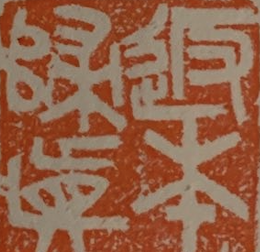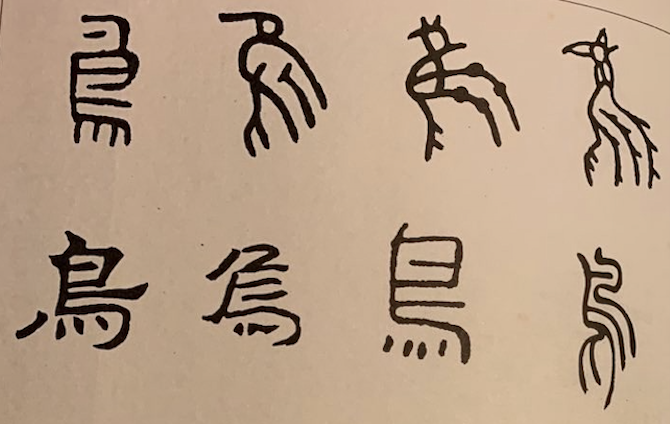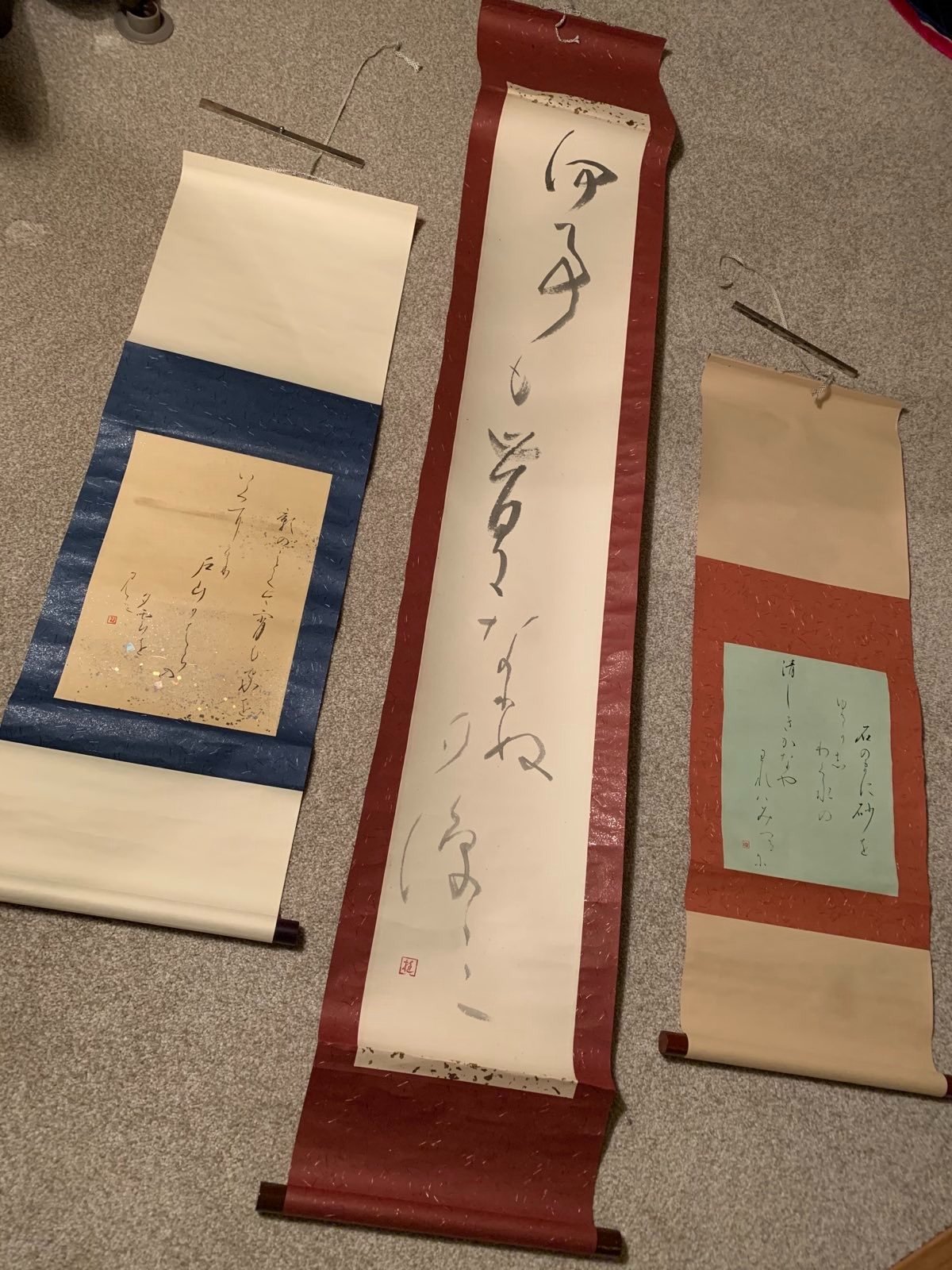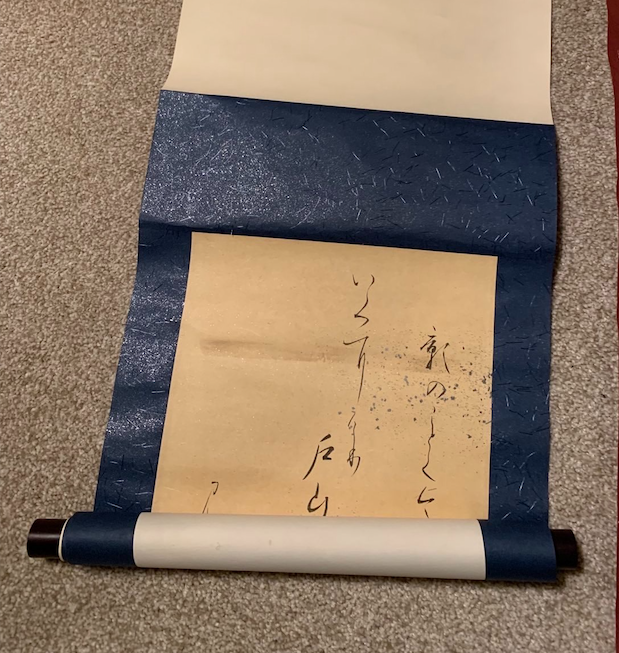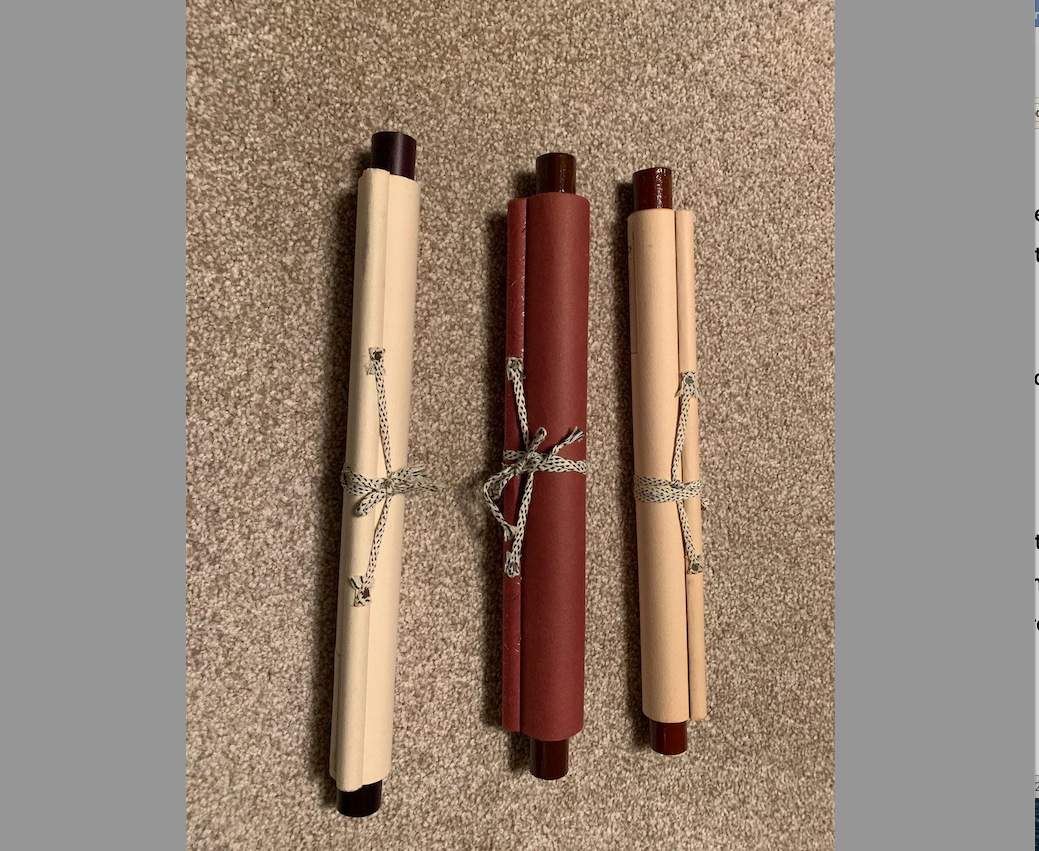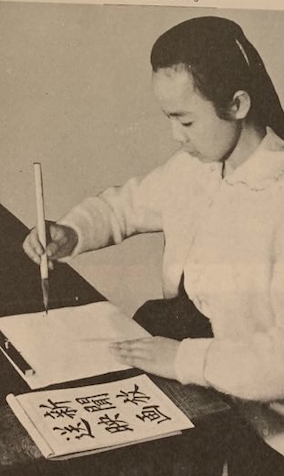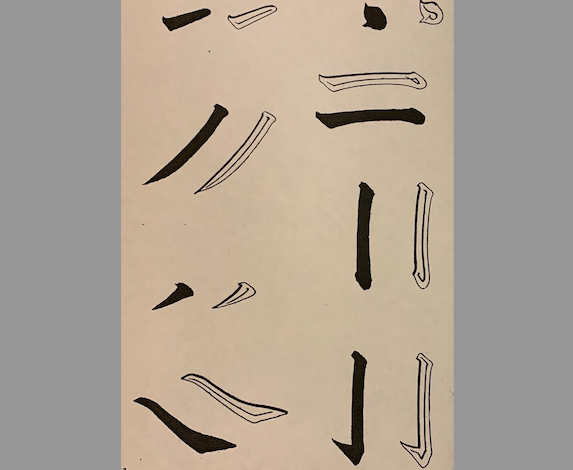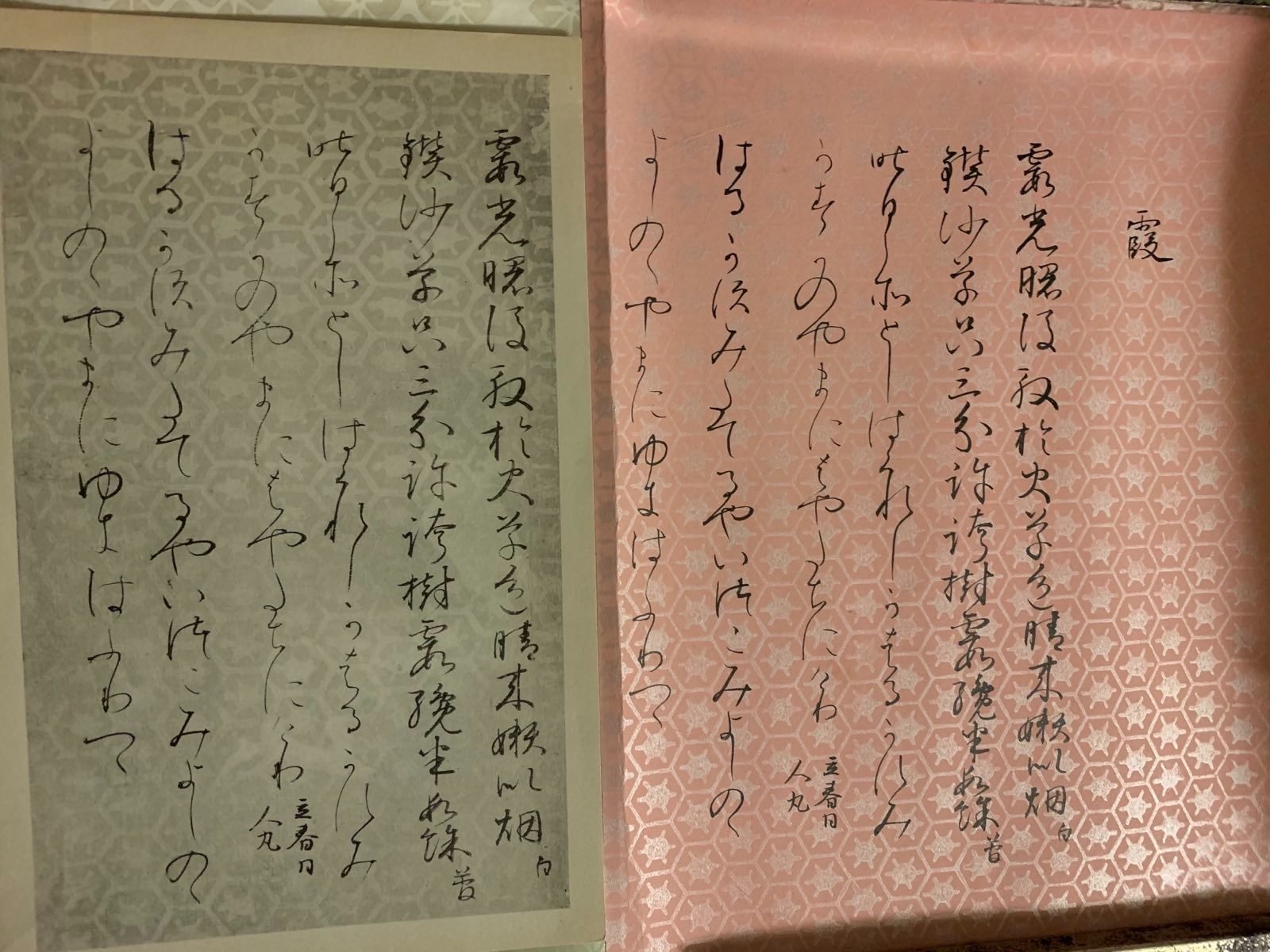The Art of Brush Calligraphy
Paper was an incredible invention in our civilization! The photo shows the paper, ink stone and brush. The red ink on the left was to print the name seal.
Life without alphabet
Can you write your name without using the alphabet?
This is what I was doing while participating in a Chinese cultural event in a shopping centre in London over the 9 days. It was to celebrate the Chinese New Year which was 1st February in 2022. I asked passers-by to write their names in English and, with the help of Google translation, my online dictionary and the Chinese staff nearby, we established the most suitable Chinese characters for their names.
There are thousands of Chinese characters, so we would select characters with good meanings. We used 愛(love)for “ai” or “ei” sound, and 徳(virtue)for “de” sound. (So 愛徳 for Eddie!) By the end of the week, I was getting the hang of the way Chinese people put non-Chinese sounds into Chinese characters.
Do you know that the Chinese characters have 5000 years of history, and up until World War II, Kanji in the Japanese language (which literally means “characters from Han Dynasty”) were virtually the same as the ones used in the Chinese language? I remember my grandmother’s letters were full of traditional Chinese characters. The Japanese government modified Kanji after World War II in order to catch up with the West. They thought the complicated characters may hinder many Japanese people from being educated. The Chinese government simplified their characters drastically around the Cultural Revolution period in China.
The uninterrupted cultural heritage of thousands of years has been destroyed only in the last 80 years or so.
Some Chinese characters are pictographs such as 山 (mountain) and 川 (river), but some characters are combinations of pictographs. What do you think you get if you put the sun (日) and the moon (月) together? i.e. 明. Put yourself in the environment before electricity. It means “bright”.
According to a legend, a four-eyed deity invented Chinese characters. He must have been able to see through the world. Through the combination of radicals (parts of the characters) ancient Chinese philosophy has been revealed. Let’s take an example of 徳(virtue). The left side radical indicates action. The right bottom radical is a pictograph of the heart. The right top indicates looking straight with an eye, i.e. being honest. A virtuous person is straight and honest in both actions and mind.
Picked up this image from the Japanese Epoch Times.
Life before paper
In the Cultural event, I put a seal in red ink after the person’s name, so it looks like an official artwork. Instead of my own name, my seal bears four characters 返本帰真, meaning “getting back to your true self”.
Some people responded deeply with this message. See the far left picture below. The four characters are curved by a specialized artist in Tokyo. These characters are in a seal script.
Over five thousand years, the characters have been developed in so many different styles in Chinese characters. The middle picture shows characters meaning “bird” before paper was invented. They may have been carved on stones, bones, wood, clay or drawn on silk…
Life after paper was invented
The picture to the far right above shows characters drawn using a brush on paper. They were taken from various ancient writings. You see that there is a distinctive difference in styles from the ones before paper was invented.
About 2,000 years ago, paper was invented by a Chinese court official, Cai Lun, by mixing bark, hemp and rags with water. It was mashed into a pulp, the liquid was pressed out and then it was hung the thin mat to dry in the sun. I found a short YouTube video (Cai Lun - Paper Industry International Hall of Fame 2:35), admiring his achievement.
The emergence of paper made recordings (and artwork) easy to store and to carry around. These artworks below (my own calligraphy work from my school days) show this great merit of paper. The wooden stick becomes a nice weight when you hang the art work on the wall, and becomes the most convenient centre when you roll the paper around when storing. Strings attached are used for hanging the artwork on the wall, as well as for tying up the roll. No waste of materials. Sheer genius!
Basic Brush Strokes
Using a brush and applying ink on paper developed a new style of characters. Although the Japanese calligraphy involves joined up and cursive styles, we all start from the basic brush strokes based on the Chinese calligraphy.
First of all, you must align your belly bottom with the centre of the paper. (This automatically makes your spine straight – magic!) Then you hold the brush, making sure the brush is vertical just like your spine.
Now put the ink on the brush and draw the basic stroke. It is essential for a brush to be pointed at the end, so that the brush can make a tear drop shape. See the “dot” on the top of the middle photo . Then can you see the very basic stroke “一”(one) just below the dot? Do you see that this stroke starts with one tear drop and ends up with another tear drop. The white lines besides the black lines indicate how the brush should be moved.
When you are connecting the two tear drops, you are breathing out. You don’t flip your wrist at all. The arm movement should come from deep inside of your body. It is almost like practicing martial arts, while sitting at the desk!
We must practice each stroke many many times until the perfect line is achieved. Then you work on the total balance of each character. You also have to pay attention to the consistency of the ink. If you do not have enough water, it gets dry. If you have too much water, it becomes grey and less powerful.
There are eight basic strokes. There is one character which includes all the strokes. If you can draw it perfectly, you have mastered all the basic strokes. And the character is 永, meaning “eternity”. It is so profound, isn’t it? (The photo on the right shows the character, “eternity”.)
[Photos here and the two photos showing characters for “bird” are taken from a Japanese book called “小学生の書道講座” (Calligraphy lectures for primary school pupils), published in 1960 by 二玄社 (nigen sha) ISDN 8371-14292—5702]
Japanese calligraphy
As a part of training in Japanese calligraphy, I used to copy ancient writings. I found it fascinating. I am breathing exactly the same as the ancient person was when he was drawing these lines. It is like getting into a time machine, travelling back several hundred years.
The pink section on the above photo is my work or the exact copy of the ancient writing on the left, which is a print from 和漢朗詠集 “Wakan roeishu” (Assembly of Japanese and Chinese poems) by 藤原公任 “Fujiwara no Kinto” (966-1041). The feature of this work is “softness”. The work is highly regarded among Japanese calligraphers since it established a distinct Japanese style in writing Kanji (or Chinese characters). I just noticed that the pattern on the paper (tortoise shell) is the same as the one used several hundred years ago. The way the tradition has been carried on in Japan is quite something.
The cultural event brought back some memories.
I have realized that I inherited something valuable by learning Japanese calligraphy for 10 years under the same teacher from the age of 12.
Digital culture has changed our way of living dramatically in recent years, but if the electric power was cut off, we would all get lost. A brush on paper requires only a bit of water to melt the ink block. Besides, this is a step for self-discipline when learning each stroke of complicated characters.
I must confess that I have been completely out of practice and was unable to draw a nice straight vertical line at the event. It would be good to bring back calligraphy as a part of my retired life for improving myself in mind and actions.
(Photo) At the Cultural event in February 2022,
promoting Shen Yun show in London.
London: 26 February - 13th March 2022
Birmingham: 31 March - 3 April 2022


